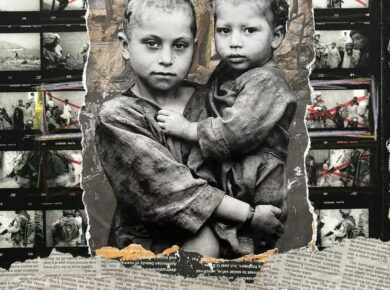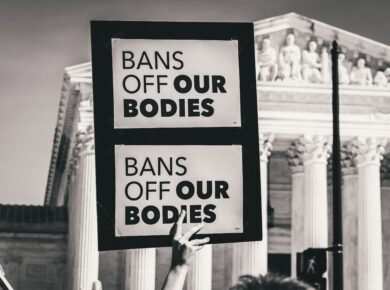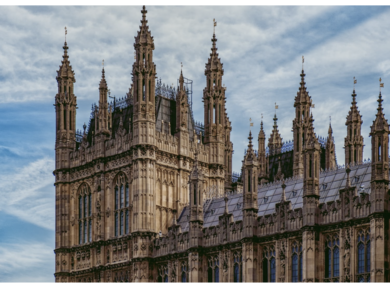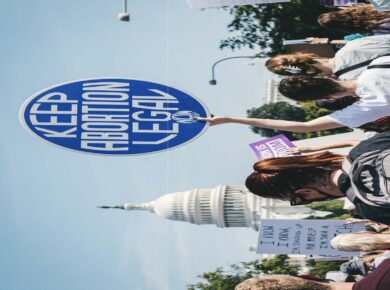Disclaimer: This blog post solely reflects the opinion of the authors and should not be taken to represent the general views of IPPR’s management/ editorial team or those of fellow authors.
Soberana and Abdala are the names of the two Cuban COVID-19 vaccines in final trials, which will test their efficacy and safety before being given to millions of people. The names are telling. Soberana means sovereignty in Spanish, while Abdala is the name of a play written by José Martí, a well-known author and central figure in the Cuban independence movement. Indeed, the names of these vaccines (two out of the five COVID-19 vaccines developed to date in Cuba), connote sovereignty and independence, as that is what they stand for in the political and economic environment which has kept Cuba isolated for decades.
Thus far, it has mostly been the wealthier countries, such as the United Kingdom and China, which have developed and produced COVID-19 vaccines. Technological capacities, human capital and other factors of production are to thank for their ability to do so. However, if these same nations were to lift the patents off of these vaccines, many more countries would be able to produce them locally instead of waiting on these richer nations to ship the vaccines. The lack thereof has effectively created a global vaccine apartheid. Thus, the developing nations of the world are pushed to rely on countries such as the United Kingdom, the United States, and Germany to supply them with COVID-19 vaccines, through frameworks such as COVAX.
The situation is different when it comes to Cuba. It has already sent out thousands of doses to countries which, for political purposes, refuse to administer COVID-19 vaccines from some of the wealthier nations which have produced them. Iran, for example, is doing a trial run of 100,000 Soberana doses after the Supreme Leader Ayatollah Ali Khamenei banned the British and American vaccines (Matos and Carmen, 2021).
Cuba has also said that if the trials are successful, the vaccines would be available for purchase at an affordable price. Venezuela, Suriname and Ghana have all expressed interest (Matos and Carmen, 2021; Oppmann 2021).
Cuba’s ability to produce 5 different COVID-19 vaccines is impressive considering the fact there is not a single Cuban vaccine, for COVID-19 or any other disease, in the North American or European markets.
Moreover, the vaccines come in the face of a trade embargo and political isolation, rendering Cuba as a healthcare champion of the developing world.
Indeed, Cuba has had a somewhat unique and interesting relationship with healthcare investment. Despite being extremely resource-constrained, one of the main goals of the post-Revolution era leadership of the 1960s was to provide free and universal healthcare coverage to all citizens. Dental and vision care, check-ups, and even many surgeries are free of charge. Cuba has an impressive legacy of focusing on cancer research, of providing rural healthcare, and of rivalling even developed countries on several indicators. For example, Cuba has one doctor per 150 patients while the United Kingdom has 2.8 doctors per 1,000 patients (Warner, 2016). Furthermore, Cuba regularly sends out doctors to help out during medical emergencies in Latin American countries but also to other continents, providing more medical personnel to the developing world than all the G8 countries combined (Huish and Kirk, 2007).
Undoubtedly there are several issues with the Cuban healthcare model, including a lack of basic necessities like electricity, clean running water, and the tools and technologies needed for speedy treatment. The Cuban case is a glimmer of hope for the developing world which shows that even political and economic underdogs can have a chance combating the massive global wave of COVID-19 infections. And that is really what Cuba represents: sovereignty and independence in securing life-saving vaccines for the citizens of this small and penurious island as the product of decades-long investments in health care. As the Cuban pop band Buena Fe put it, Cuba is “brave David confronting the bully Goliath”.
Bibliography
“1bn COVID Jabs given Globally – but over Half in Just 3 Countries.” 2021. https://www.aljazeera.com/news/2021/4/24/billion-coronavirus-vaccine-doses-administered-globally (April 25, 2021).
“Against All Odds: Cuba Achieves Healthcare for All— An Analysis of Cuban Healthcare by: Carol Lynn Esposito, EdD, JD, MS, RN; Jacqueline Gilbert, MS, RN; Anthony Ciampa, BSN, RN-BC; and Jeremy Markman, MA.” issuu. https://issuu.com/nystatenursesassociation/docs/nysna_journal_v45.1/s/10837464 (April 25, 2021).
Castro, Maria, Steve Melluish, and Alexis Lorenzo. 2014. “Cuban Internationalism – an Alternative Form of Globalization.” International Review of Psychiatry (Abingdon, England) 26(5): 595–601.
Huish, Robert, and John M. Kirk. 2007. “Cuban Medical Internationalism and the Development of the Latin American School of Medicine.” Latin American Perspectives 34(6): 77–92.
Kirk, John M., and Michael Erisman. 2009. Cuban Medical Internationalism: Origins, Evolution, and Goals (Studies of the Americas). http://libgen.li/item/index.php?md5=1490BEA43C295FC81F79EA214D143BB8 (April 25, 2021).
Matos, Orlando, and Carmen Sesin. 2021. “Cuba Says It’s ‘betting It Safe’ with Its Own Covid Vaccine.” NBC News. https://www.nbcnews.com/news/latino/cuba-says-betting-safe-covid-vaccine-rcna643 (April 25, 2021).
Oppmann, Patrick. 2021a. “As the World Vies for Vaccines, Cuba’s Making Its Own.” Coronavirus.
https://www.ctvnews.ca/health/coronavirus/as-the-world-vies-for-vaccines-cuba-s-making-its-own-1.5332446 (April 25, 2021).
———. 2021b. “Inside Cuba’s Race to Vaccine Sovereignty.” CNN. https://www.cnn.com/2021/03/31/americas/cuba-vaccines-covid-phase-three-intl-lat am/index.html (April 25, 2021).
Pineo, Ronn. 2019. “Cuban Public Healthcare: A Model of Success for Developing Nations.” Journal of Developing Societies 35(1): 16–61.
Sixto, Felipe Eduardo. “An Evaluation of Four Decades of Cuban Healthcare.” ASCE. https://www.ascecuba.org/asce_proceedings/an-evaluation-of-four-decades-of-cuban-healthcare/ (April 25, 2021).
Warman, Andrea. 2001. “Living the Revolution: Cuban Health Workers.” Journal of Clinical Nursing 10(3): 311–19.
Warner, Rich. 2016. “Is the Cuban Healthcare System Really as Great as People Claim?” The Conversation. http://theconversation.com/is-the-cuban-healthcare-system-really-as-great-as-people-claim-69526 (April 25, 2021).
Westhoff, W. W., R. Rodriguez, C. Cousins, and R. J. McDermott. 2010. “Cuban Healthcare Providers in Venezuela: A Case Study.” Public Health 124(9): 519–24.
World Health Organization. 2008. “WHO | Cuba’s Primary Health Care Revolution: 30 Years On.” WHO. https://www.who.int/bulletin/volumes/86/5/08-030508/en/ (April 25, 2021).
By Dolores Cviticanin
Dolores Cviticanin completed her Bachelor degrees at Sciences Po and UBC before finishing her MSc in International Public Policy at UCL in September 2020. She has written for the United Nations Association of Canada and e-International Relations before. She is currently the Project Coordinator at the Canadian Network for International Surgery. She is passionate about feminism, health and public policy.







